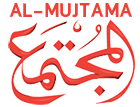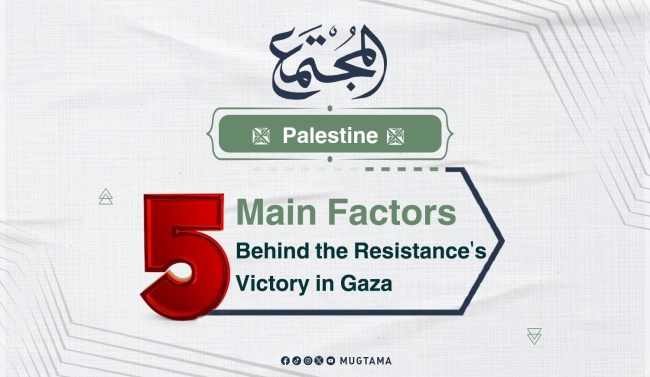5 Main Factors Behind the Resistance's Victory in Gaza Featured
In the midst of the ongoing conflict with the occupation, the Palestinian resistance in Gaza has managed to achieve an unprecedented victory, despite the vast disparities in military power and advanced technology possessed by the enemy. This success was not a mere coincidence; rather, it is the result of careful planning and multiple factors that converged to secure a relative advantage for the resistance in battle. Allah Almighty said: (And prepare against them whatever you are able of power and of steeds of War by which you may terrify the enemy of Allah and your enemy) (Al-Anfal: 60).
In this context, we will explore the main factors that contributed to the resistance's victory in Gaza, ranging from military preparedness and war tactics to popular support and media and political influence.
- 1. Military Preparedness and Training:
The Palestinian factions meticulously and systematically trained their forces, relying on unconventional warfare tactics that contributed to confusing the enemy and imposing a relative balance on the battlefield. Among these tactics were surprise attacks that included executing quality operations at unexpected times, which reduced the Israeli army's ability to respond quickly. Additionally, locally made rockets were one of the most prominent weapons of the resistance, used to deliver severe strikes against strategic targets within the occupied territories, demonstrating the factions' capacity to challenge the technological superiority of the enemy.
- 2. Ability to Maneuver Militarily:
Palestinian resistance factions displayed great capability in developing flexible and complex combat tactics in the face of Israeli military superiority. One of the most notable tactics was the use of tunnels, which provided fighters with the ability to move between locations and conduct offensive operations in unexpected areas, disorienting the occupation forces and weakening their ability to destroy the resistance's infrastructure. Moreover, precise rocket strikes targeting sensitive locations within the occupied territories disrupted the enemy's ability to respond quickly. Tactics diversified to include ambushes, mortar shells, explosive devices planted in the ground, and the use of booby traps in homes and tunnels, making it difficult for the occupation to exploit its complete technological superiority in an asymmetric battle.
- 3. Popular Unity and Widespread Support:
One of the fundamental factors that helped strengthen the resistance's steadfastness in Gaza was the widespread popular unity that it received from all segments of the Palestinian people, both inside and in the diaspora.
This support was not limited to public gatherings in the streets or expressing symbolic solidarity, but extended to include active participation from citizens in resisting the occupation by providing shelter and resources to the factions, while maintaining high morale despite the harsh conditions. This solidarity played a pivotal role in boosting the morale of the fighters on the ground, making them more determined to confront the Zionist war machine.
Additionally, this widespread popular support added a political dimension to the resistance and contributed to creating a broad grassroots base that strengthened the political standing of the resistance on both regional and international stages.
4- Media Strategy and Political Messaging:
The resistance factions in Gaza benefited from advanced media strategies to convey their messages to the world, effectively employing modern media to address international public opinion. While the occupation showcased its military might through its media outlets, the resistance factions succeeded in highlighting its crimes against civilians, helping to bring international attention to the suffering of the Palestinian people.
Through precise political messaging, the factions managed to motivate the international community to adopt positions against the occupation, contributing to the creation of international pressure on the occupying government to stop its aggression. The resistance was also keen on utilizing media to spotlight humanitarian issues in Gaza, thus achieving a balance in presenting the Palestinian narrative versus the Zionist narrative.
5- Popular Solidarity and International Pressure:
Despite the occupation's continuous attempts to demonize the Palestinian resistance and depict it as a terrorist threat, the factions in Gaza received broad support from some countries and regional and international organizations. This political solidarity was reflected in the stance of some countries affirming the right of Palestinians to defend themselves, having a direct impact on shaping a more supportive global public opinion for Palestinian rights.
Furthermore, the international efforts against the Zionist attacks in Gaza resulted in pressure being applied to various governments to limit their unconditional support for the occupation. This pressure formed an important point of strength that helped the resistance bolster its position on the global stage, in addition to enhancing the morale of the resistance fighters on the ground.
---------------


